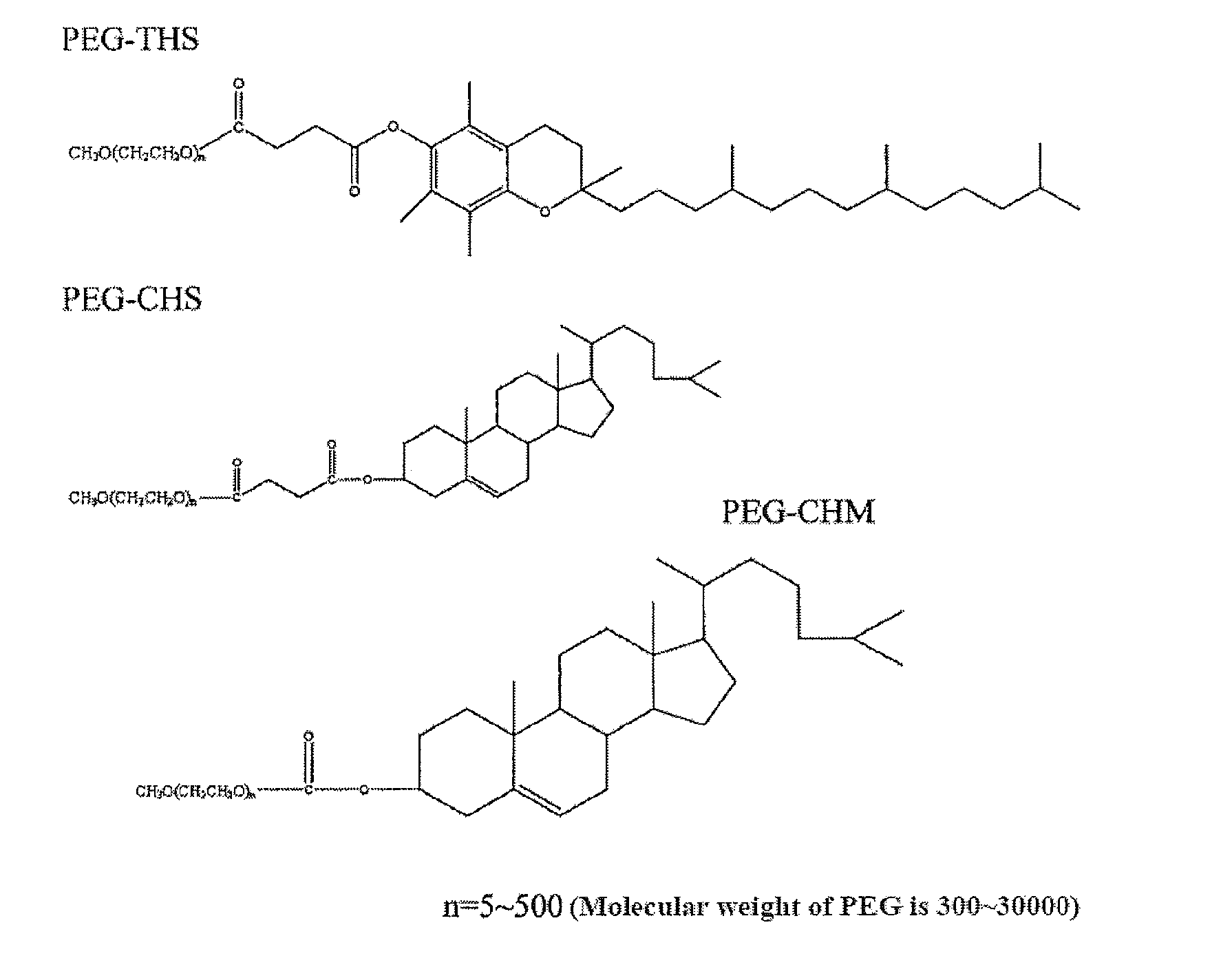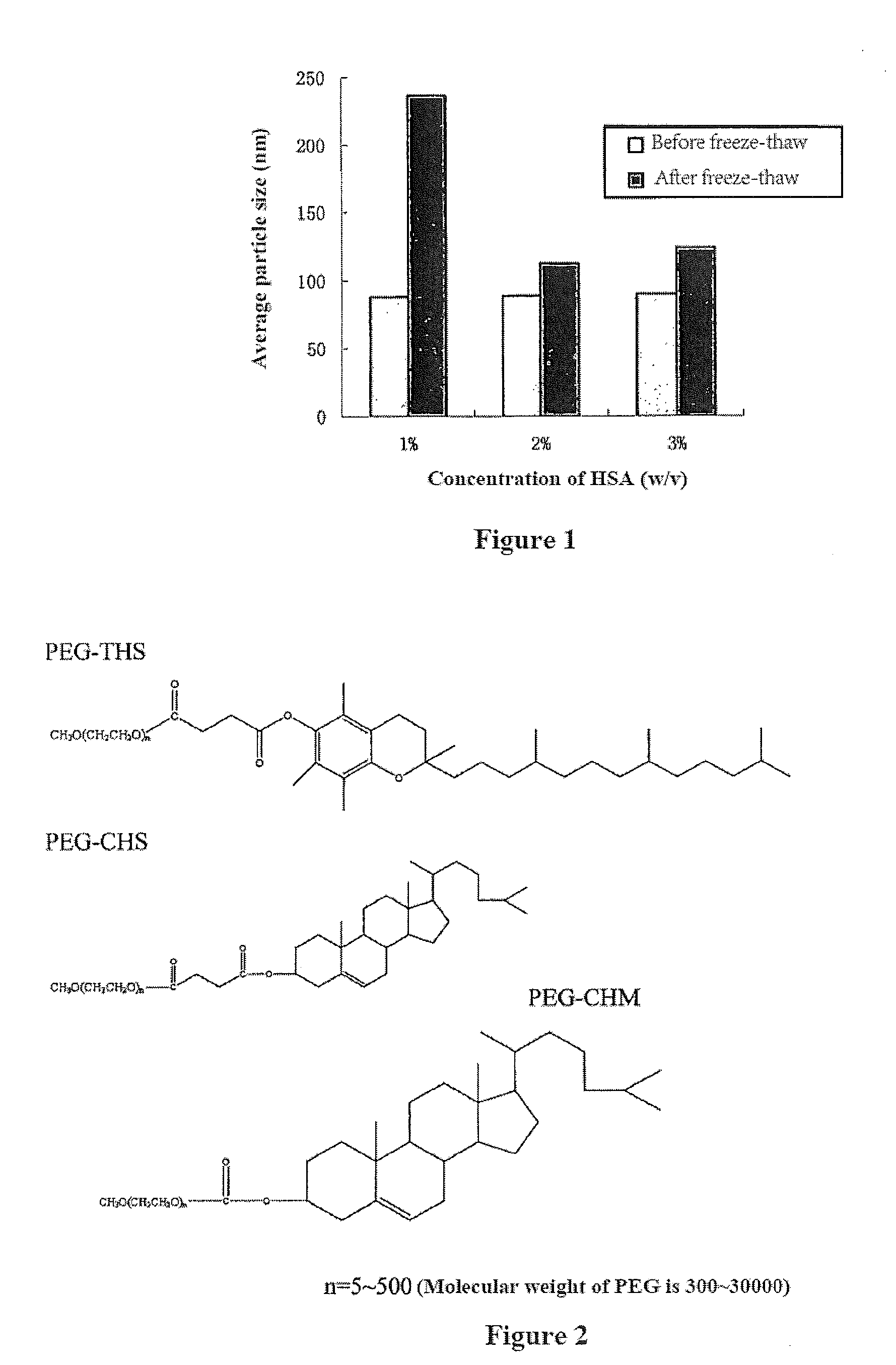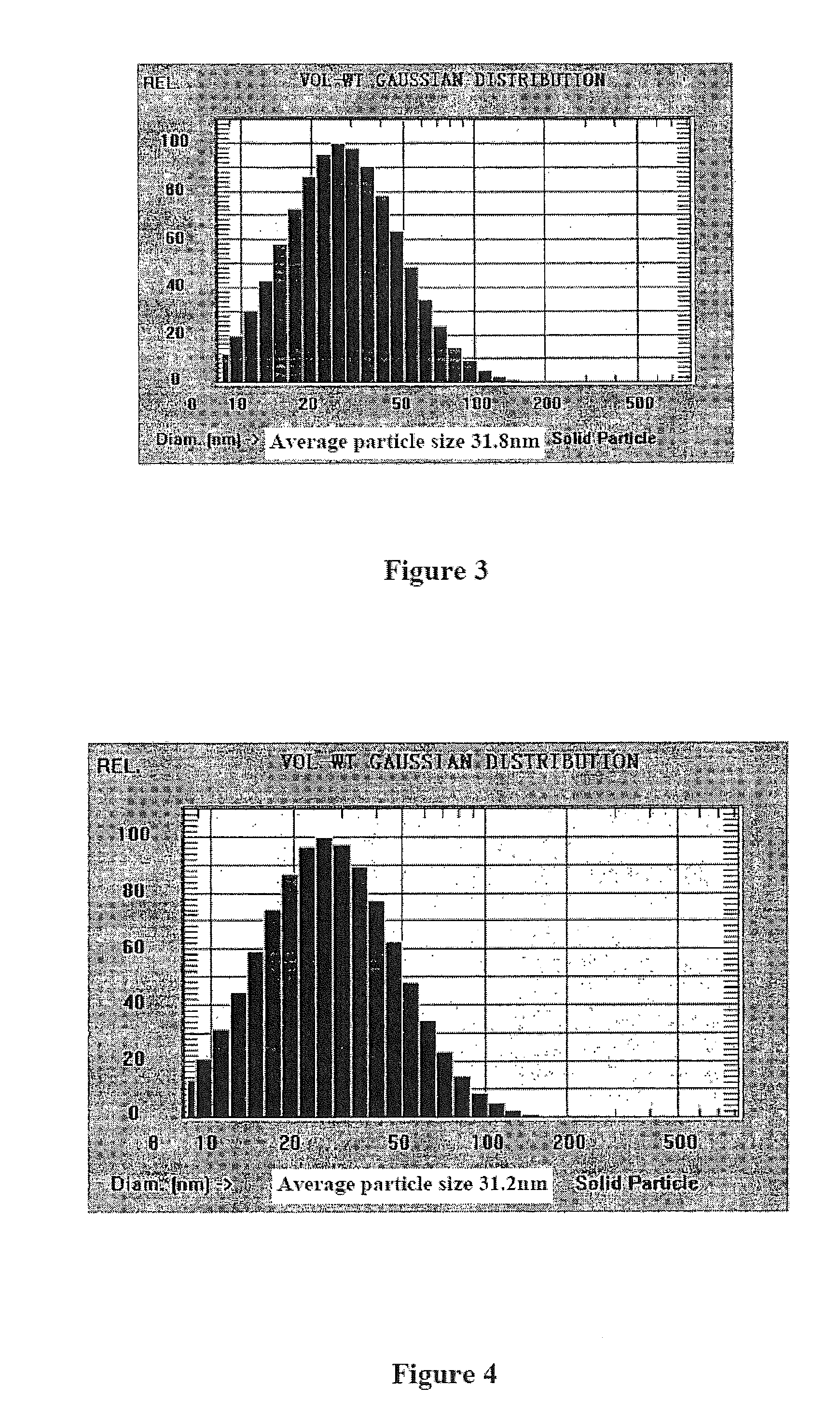Drug Delivery System, its Preparation Process and Use
a delivery system and drug technology, applied in the field of pharmaceuticals, can solve the problems of low entrapment efficiency and drug loading, low stability of liposomes, and limited loading of liposomes, and achieve the effect of improving the freeze-thaw stability of nanoparticles
- Summary
- Abstract
- Description
- Claims
- Application Information
AI Technical Summary
Benefits of technology
Problems solved by technology
Method used
Image
Examples
example 1
Issues in the Preparation of Cucurbitacin HSA Nanoparticle by Ultrasound Probe Sonography
[0085]
Cucurbitacin B0.01 gHAS 4 gWaterappropriate amount
[0086]Cucurbitacin B (purity >98%) was dissolved in 1 ml ethanol for standby. An HSA solution of 4% (g / ml) was obtained by dissolving the formulation amount of HSA in water and added into the ethanol solution of cucurbitacin B. After being dispersed, the obtained mixed solution was placed in an ultrasonic machine and treated by 200 W ultrasound, followed by dispersion for 5 minutes by 600 W ultrasound to obtain an emulsion. The organic solvent was removed by rotary evaporation, and the nanoparticles were obtained. The average particle size of the prepared nanoparticles was 282.2 nm, with the particle distribution too wide to pass through 0.45 μm micropore film. After being left to stand for 20 minutes, precipitate was produced, thereby indicating that the nanoparticle system was instable. After freeze-drying, the system was poorly redisper...
example 2
Resolution of Issues in the Preparation of Cucurbitacin HSA Nanoparticle with Ultrasound Probe Sonography by Addition of Phospholipid
[0087]
Cucurbitacin B0.01 gHAS 4 gS100 1.5 gWaterappropriate amount
[0088]Cucurbitacin B (purity >98%) and S100 (soybean phosphatidylcholine, SPC, Germany LIPOID Company) were dissolved in 1 ml ethanol for standby. An HSA solution of 4% (g / ml) was obtained by dissolving the formulation amount of HSA in water and added into the ethanol solution of cucurbitacin B / phospholipid. After being dispersed, the obtained mixed solution was placed in ultrasonic machine and treated by 200 W ultrasound at first, followed by dispersion for 5 minutes by 600 W ultrasound to obtain emulsion. The organic solvent was removed by rotary evaporation, and then nanoparticles were obtained. The average particle size of the prepared nanoparticles was 156 nm, and its particle distribution was narrow so as to pass through 0.45 μm, 0.3 μm micropore films. There was no precipitate pr...
example 3
Preparation of Cucurbitacin HSA Nanoparticles by Dissolution of Phospholipid in tert butyl Alcohol
[0089]
Cucurbitacin B0.01 gHAS 4 gS100 1.5 gWaterappropriate amount
[0090]Cucurbitacin B (purity >98%) and S100 (soybean phosphatidylcholine, SPC Germany LIPOID) were dissolved in 5 ml tert-butyl alcohol for standby. An HSA solution of 4% (g / ml) was obtained by dissolving the formulation amount of HSA in water and added into the tert-butyl alcohol solution of cucurbitacin B / phospholipid. After being dispersed, the obtained mixed solution was placed in an ultrasonic machine and treated by 200 W ultrasound at first, followed by dispersion for 5 minutes by 600 W ultrasound to obtain emulsion. The average particle size of the prepared nanoparticles was 139 nm, and its particle distribution was narrow so as to pass through 0.45 μm, 0.3 μm micropore films. There was no precipitate produced after being left to stand for 60 minutes, thereby indicating that the stability of the nanoparticle syste...
PUM
 Login to View More
Login to View More Abstract
Description
Claims
Application Information
 Login to View More
Login to View More - R&D
- Intellectual Property
- Life Sciences
- Materials
- Tech Scout
- Unparalleled Data Quality
- Higher Quality Content
- 60% Fewer Hallucinations
Browse by: Latest US Patents, China's latest patents, Technical Efficacy Thesaurus, Application Domain, Technology Topic, Popular Technical Reports.
© 2025 PatSnap. All rights reserved.Legal|Privacy policy|Modern Slavery Act Transparency Statement|Sitemap|About US| Contact US: help@patsnap.com



